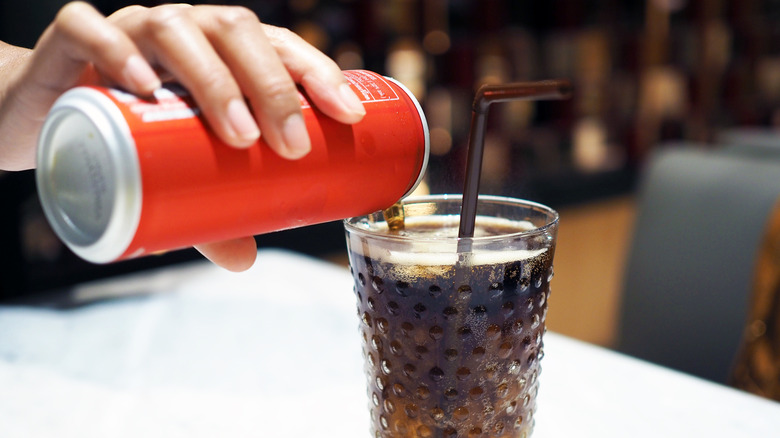What's Common In American Drinks Is Almost Non-Existent In Europe
Different cultures have different food and beverage practices, and some of them might come as quite a shock. For example, in the United States, we like our refreshing beverages iced and cold. In some other parts of the world, however, that's generally not the norm. In European countries, especially, when you order a soda or glass of water, you might find that it comes out only slightly chilled, or even at room temperature. What you're least likely to see are ice cubes, as iced drinks are just not common in Europe.
That's right! You won't find a Coke poured over ice in most establishments, and you won't be able to get your favorite iced coffee when in Europe. This isn't some urban legend or Internet prank either, and people can actually get a little testy about the subject online.
One Reddit user recalled a trip to France where they "went to a grocery store to buy water and picked one out from the 'fridge' section and it was almost room temperature." Another said, " ... why do people overseas drink room-temperature water? It's gross." However, not everyone feels this way. A Reddit user said, "My mouth hurts, and every time I don't mention 'no ice' in restaurants, I've regretted it ... " Another Redditor mused, "I don't get the point of ice unless you want to cool down from the heat." So, whether or not you try to avoid ice when traveling in Europe, ice will likely avoid you.
Why iced drinks are uncommon in Europe
There are a few long-held beliefs that keep countries like France and Italy from getting on the ice train. For one thing, they don't believe iced water is healthy, thinking that ice can cause sore throats or other health issues. In Germany, people believe cold drinks can cause stomach aches. If you ask for ice, be prepared for the drink to come with only one or two cubes. If you're wondering what kind of ice you'll get in your cocktail at European bars, know that this dislike of ice cubes extends to alcohol as well. While this does ensure you get more liquid in your glass and the contents won't get watered down, you'll miss that frosty chill you may be used to.
On the other hand, America's love for ice is almost as old as the country itself. Americans started to perfect shipping ice long distances for medicinal and preservation purposes, selling the ice internationally. It was also during the 19th century that Americans began to see ice as fashionable, and many homes began featuring ice boxes in order to accommodate the trend. Ice endured in popularity until American inventor Dr. John Gorrie invented the ice machine in the 1850s, cementing iced drinks' place in U.S. history.
Unfortunately, this passion and pride in ice tech never became a part of European cultures. Most older houses and restaurant buildings don't have space for ice refrigerators, because they've never been desired by the populace. So, while some countries, such as Spain, may still offer you ice, you'll just have to get used to room temperature beverages during your European vacation.

